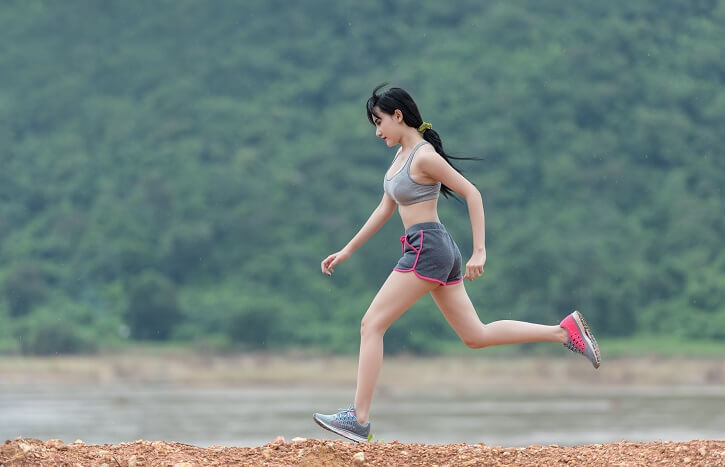Often runners feel great during a hard workout, take the next run easy, perhaps a second run easy, and then attempt another hard workout. For this second hard run, though, they feel less crisp, not as light on their feet, and the results and therefore motivation suffer. The standard ‘hard easy hard’ or ‘hard easy easy hard’ equation was followed but the expected stress-recover-supercompensation formula did, seemingly, not work. The runner is left confused, and perhaps a bit frustrated. The reality of this situation, however, is that the cardiovascular and metabolic systems may very well have adapted to the first hard workout, however, inadequate attention to the musculo-skeletal system may have prevented these increased efficiencies from coming to fruition.
To ‘connect’ these runs, or reproduce the ease of motion and speed felt in one workout with the next, many things can be done. First is of course the standard recovery tactics:
1) Stretching after the runs and more if needed
2) Eating a meal, drink, and or bar with slightly more protein soon after the hard workout
3) Taking an ice bath the night after the hard workout
4) Foam rolling key areas of stress as needed: glutes, hips, hamstrings being the most common
All paramount and should be standard for those able to work to high levels of exertion during training. Along with these tactics, however, let’s add in a few techniques to ensure the muscles, tendons, ligaments, and fascia are remaining supple, strong, and flexible during the recovery process and the recovery runs.
First, a review. Keep in mind stress to the legs results in minor muscle breakdowns and tears. These desired effects are then infused with chemical and hormonal reactions to help repair and then strengthen the area beyond the previous state of capacity. These chemicals and hormones, however, remain after their work is done and this causes an imbalance in the system, the result often being a feeling of stiffness. The above mentioned tactics work to mitigate these effects, but to take it a step further let’s add some loosening techniques during our easy run.
The following suggestions are based on standard drills and stretch positions. These are to be done while running and involve simply altering your stride slightly for 3-6 steps at a time, then repeating as desired. There are certainly more to be found so be creative and look for your own ‘secret steps’ to keeping your legs loose and responsive.
Butt-kicks: A controlled pull of your foot towards your glutes during the flight phase and done by primarily flexing at the knee. When done during a run this standard drill can be done with one leg at a time and with as many regular strides in between. Purpose: An active stretch of the quadriceps.
Foot-flicks: A controlled snap of your foot forward done right before the foot hits the ground and accomplished with a quick contraction of the quadriceps, this resulting in a very brief full extension (straightening) of the leg. Purpose: To loosen muscle tissue and release chemical and cellular bi-products in the quadricep, accomplished through the brief ‘shaking’ of the thigh at full extension.
Side-steps: Slightly rotate one leg outwards by having the foot facing more towards the side than straight ahead. Purpose: An active stretch of the groin muscle.
Pigeon-steps: Very slightly rotate one leg inwards by having the foot facing more inwards than straight ahead. Purpose: An active stretch of the outer hip area and hip flexors.
Cross-overs: Have the feet cross over each other when landing. Purpose: An active stretch of the inner calf, inner tendons and ligaments of the ankle, and the outer hip area.
Bowlegged-steps: Run as if a small stream of water is directly underneath you and right along your path, i.e. so that your steps have to be 4-8 inches wider apart than normal. Purpose: An active stretch of the peroneal muscles, outer tendons and ligaments of the ankle, and the groin area.
Carioca or grapevine: Running sideways by first having the right leg cross in front of the left and then behind. Purpose: Active stretch of the hip, groin, and trunk muscles.
Backwards running: Plain and simple. Purpose: An active stretch of the calves.
Only runners 100% healthy should explore and work with these techniques. For those with right and left strength or flexibility imbalances these can be quite helpful but more caution should be taken. Given the initial awkwardness of these movements be sure to do this on a flat, obstruction free area.
If you want to know more about how to run smarter and better, check out my book Pliability for Runners.

Joseph McConkey, MS, is a running coach and exercise physiologist, specializing in injury-prevention. He has coached at the club, college, and pro levels and has been the director of the Boston Running Center’s Gait Analysis Lab for more than a decade. Joseph holds the highest accreditation by the USA Track and Field Association and the IAAF, as well as a Masters in Exercises Science with a focus on Injury Prevention and Sports Performance. He is the author of Pliability for Runners.





